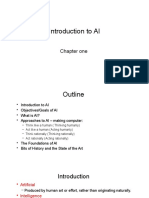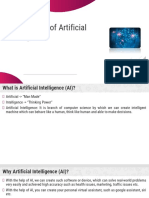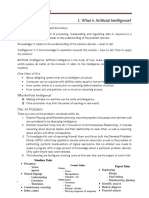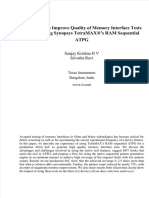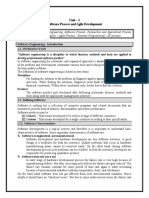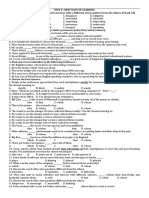0% found this document useful (0 votes)
17 views40 pagesIntroduction To Artificial Intelligence-Chp1
The document provides an introduction to Artificial Intelligence (AI), defining it as the science of making machines intelligent and outlining various schools of thought on AI. It categorizes AI tasks into Mundane, Formal, and Expert Tasks, detailing the challenges and techniques involved in each. Additionally, it discusses the Turing Test as a measure of machine intelligence and highlights various applications of AI across different industries such as healthcare, finance, and education.
Uploaded by
swayamprabhu7276Copyright
© © All Rights Reserved
We take content rights seriously. If you suspect this is your content, claim it here.
Available Formats
Download as PDF, TXT or read online on Scribd
0% found this document useful (0 votes)
17 views40 pagesIntroduction To Artificial Intelligence-Chp1
The document provides an introduction to Artificial Intelligence (AI), defining it as the science of making machines intelligent and outlining various schools of thought on AI. It categorizes AI tasks into Mundane, Formal, and Expert Tasks, detailing the challenges and techniques involved in each. Additionally, it discusses the Turing Test as a measure of machine intelligence and highlights various applications of AI across different industries such as healthcare, finance, and education.
Uploaded by
swayamprabhu7276Copyright
© © All Rights Reserved
We take content rights seriously. If you suspect this is your content, claim it here.
Available Formats
Download as PDF, TXT or read online on Scribd
/ 40




























